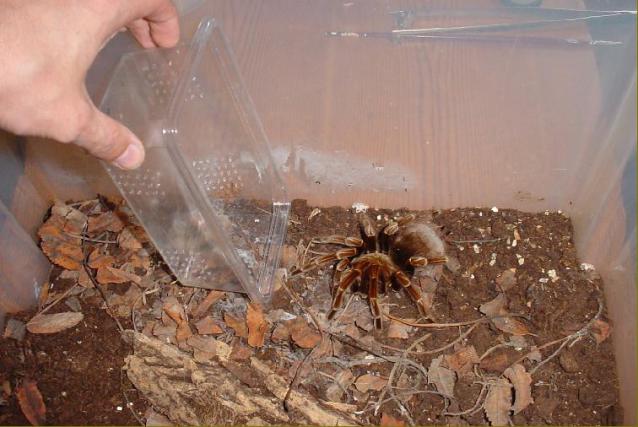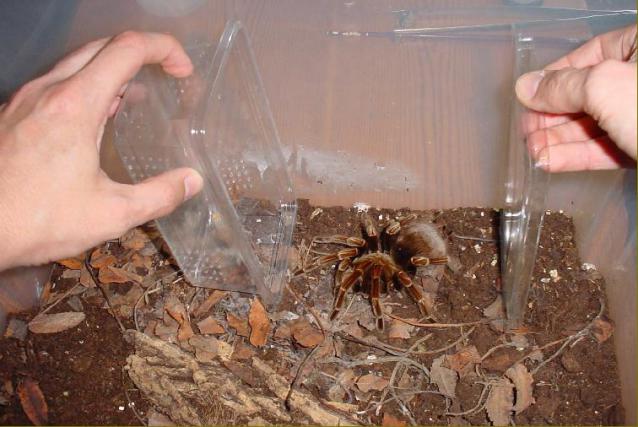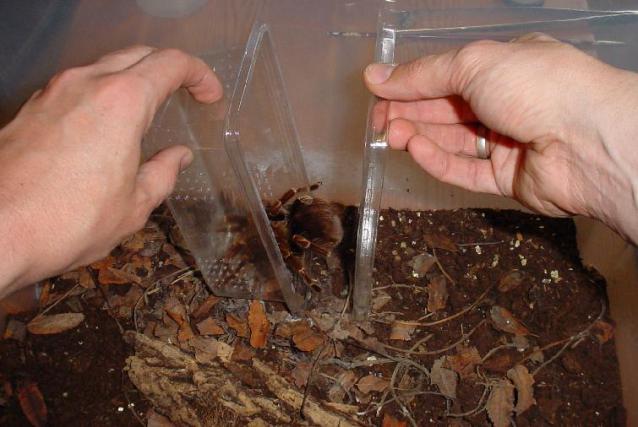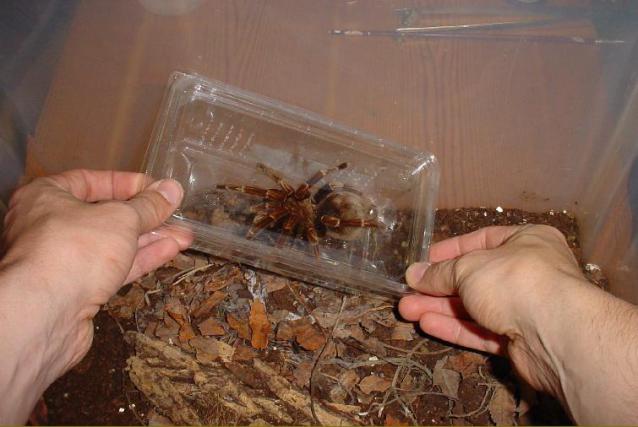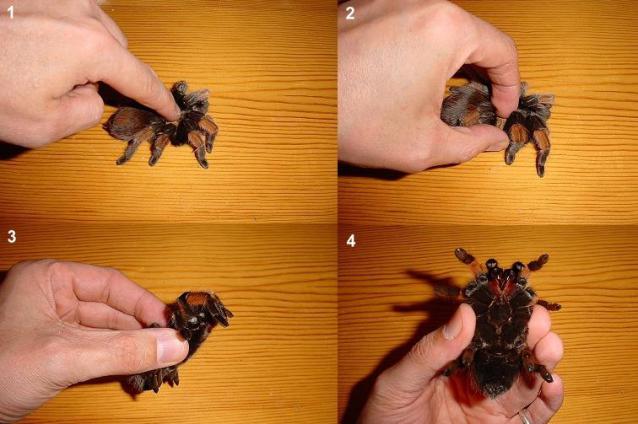
HANDLING & TRANSFERRING
One of the most common questions I receive is how you go about transferring a tarantula from one container to another without handling it. The method I use is described below and, in my opinion, it can be used on all species including the more defensive ones. The 'tub' method is really easy to use and the key is being gentle but using enough force to let the spider know who's in control. If you're not confident with the method this results in the spider running around it's container getting both itself and you stressed out. The following photo's describe the method well:
Firstly give yourself enough room to manoeuvre around the spider. This means removing any large pieces of cage decoration (cork bark or flower pot hides, rocks etc) and some burrowing species may have to be dug out in preparation. Using an empty container (cricket tubs are ideal), place it in front of the spider with the lid removed. Some species will run at this disturbance but by moving slowly towards the spider, it will eventually settle.
Bring the container lid towards the spider in a single movement, pushing the spider into the empty tub. Depending on how you do this will determine how the spider reacts. If you brush the spider rear legs with the lid, more often than not, it will become nervous and try to run away but if you use just enough force to push the spider into the tub with one continuous movement, everything should be fine. This let's the spider know who's in control and it will show little resistance. Even highly defensive species such as Haplopelma spp. can be transferred using this method. Some may turn to face the container lid and strike at it with their front legs but if the closure movement is performed continuously and with enough force, it will be impossible for the spider to escape.
Finally once the spider is inside the
tub (be careful to avoid trapping any of the legs), it can be closed securely for transferring into it's new container. To release the spider safely, just open the lid carefully and then gently tip
the spider out. More defensive species can be more difficult to release so sometimes it is best to remove the lid and place the tub in the spiders cage, allowing it to leave in it's own time (the tub
can later be removed once the spider has settled).
Although I disagree with handling tarantulas (it's more dangerous for
the spider than the handler), there may be times when you need to hold the spider. The following 'pinch' method is widely used by keepers and can prove useful when trying to sex the spider or
checking for parasites etc. Again, confidence is the key to success but this method is not recommended for certain more defensive species that will simply not tolerate being handled in this manner.
The 'pinch' method can best be described using the following photos:
1. After making sure that the spider is
calm enough for this method, gently place the first finger onto the spiders carapace, applying just enough pressure to restrict the spiders movements.
2. Place the thumb and index finder between legs ii and iii again,
being careful not to apply too much pressure to the carapace.
3. With a smooth, single movement, lift the spider up making sure that
all the legs leave the ground at the same time (this will disorientate the spider, making it calmer).
4. Once confident with your grip on the spider, it can be turned with
ease for closer ventral inspection and to put the spider back down, simply reverse the four steps as shown.
